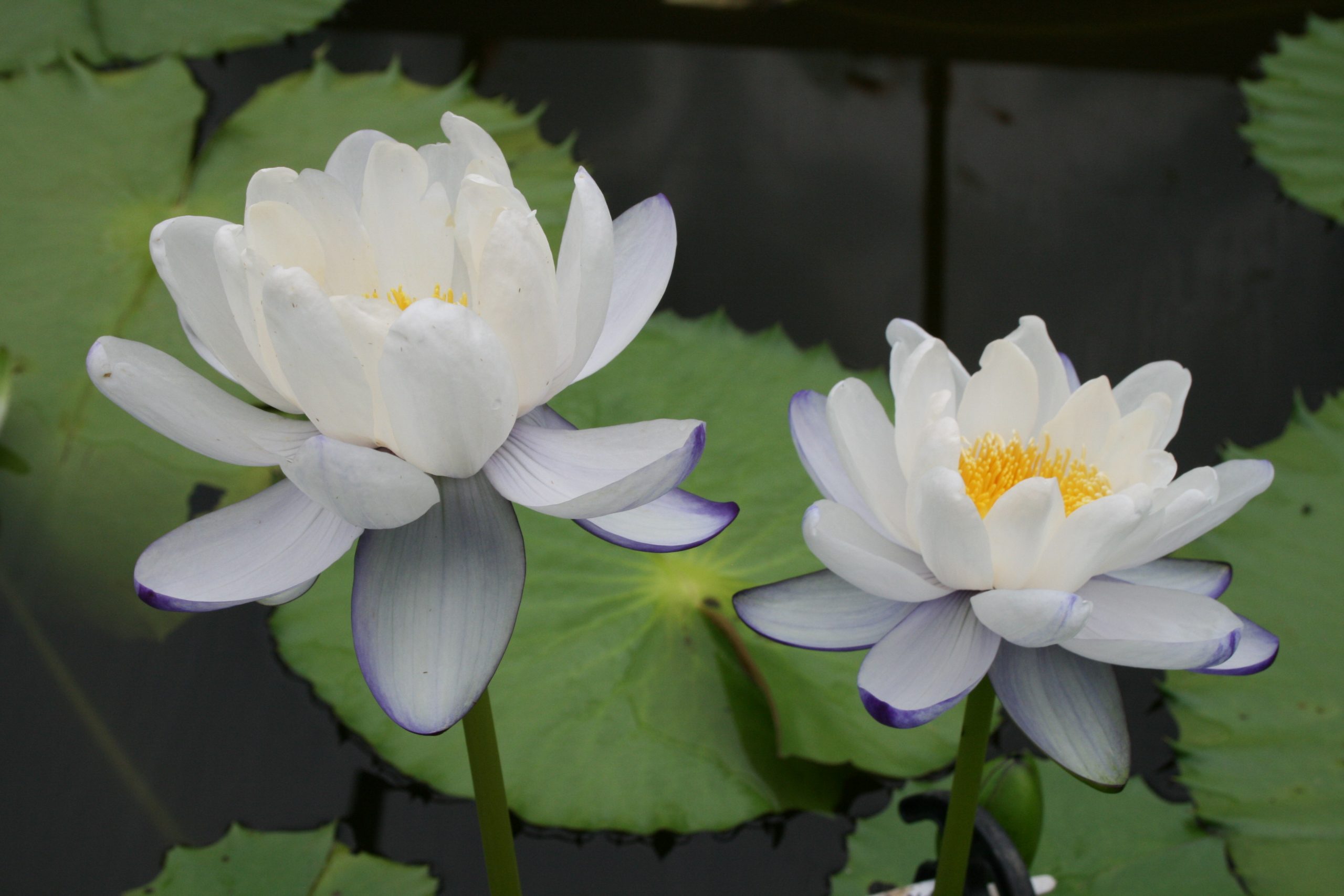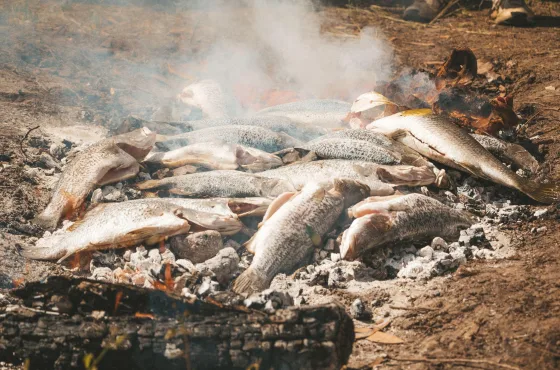
Discover 9 Different Kakadu Bush Foods
For thousands of years the lands that make Kakadu and Arnhem have been used as the hunting and gathering grounds of the Indigenous people. The techniques of hunting and gathering these foods has also been passed down through the generations with the modern custodians teaching visitors not only the traditional way of eating off the land but exploring new opportunities to export these unique flavours around the world.
When visitors come to the Kakadu some staple indigenous foods may come to mind when they explore local food options. Meats comes in a wide variety from the kangaroo, crocodile, buffalo and even magpie geese being on the menu. Kakadu’s flora shouldn’t be left out either with the Kakadu plum, red bush apple, and waterlilies with dozens other edible local plants and animals being available to those brave enough to try. Here’s a selection of local bush tucker to try when visiting Kakadu!
MEAT & FISH
Barramundi (Namarngol)
The most famous fish of Kakadu, the Barramundi, is the sought-after fish for many fisherman. A staple part of the Kakadu diet traditionally roasted on white hot coals; barramundi is an Indigenous favourite. Most plentiful as the waters of the wet season start to recede creating plentiful feeding grounds for those who know where to look.
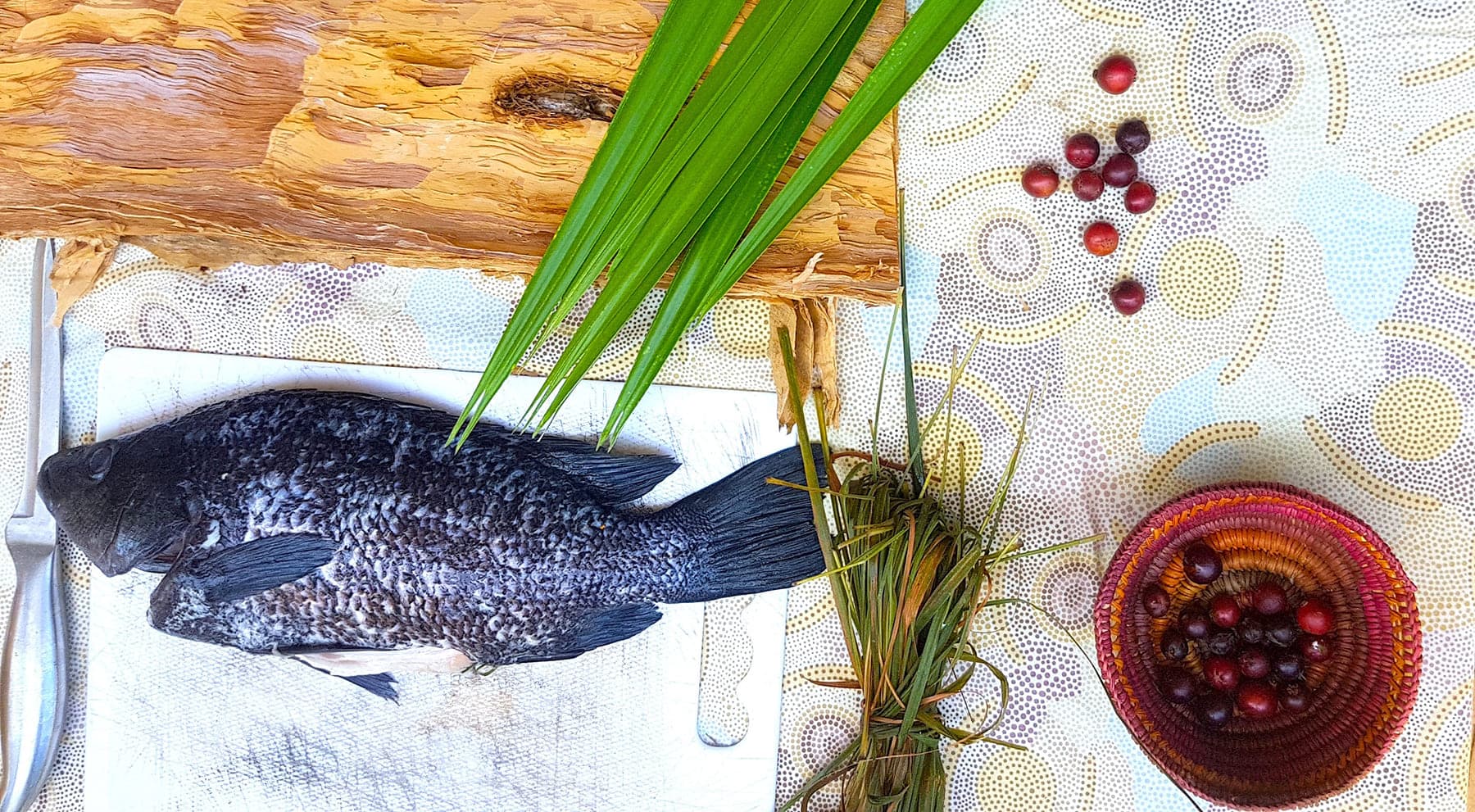
Crocodile (Ginga)
One of Kakadu’s ‘main attractions’ these prehistoric reptiles aren’t just for viewing. Crocodile meat is a local delicacy. Smaller crocodiles are the prey for choice being easier to catch of course! Not many want to go up against a tonne worth of reptile. The crocodile intestine however is reserved for elders, filled with croc fat and roasted for a delicious treat.

Magpie Geese (Bamarru)
Magpie Geese or Bamarru have been hunted for thousands of years by the Indigenous peoples of Kakadu. The preservation of the wetlands is vital for the Bamarru to be able to live, breed and thrive in a healthy habitat, with the Eleocharis or an-gululach being an important floodplain grass and food source for their survival. During nesting periods Bamarru create nests to lay their eggs in a native rice grass growing on the flood plains.
Bamarru is eaten during certain times of the year when they are fat and local families will collect mobok, a pandanus seed, to use as coals to cook the fresh goose on. It adds a great flavour to the meat instead of just using firewood.
The passing of knowledge how to hunt and prepare foods is passed down by the elders. Many teach their children from an early age to respect the animals you are eating by utilising all parts. For example, Bamarru wings are turned into fans to help make fires or to fan children when they are hot. Sustainability is embedded into the culture, to only hunt when food is in season and when they are at a healthy population, as well as only taking what is needed to feed yourself and family. Geese hunting is also regulated by parks and wildlife to ensure a stable population for future generations to enjoy
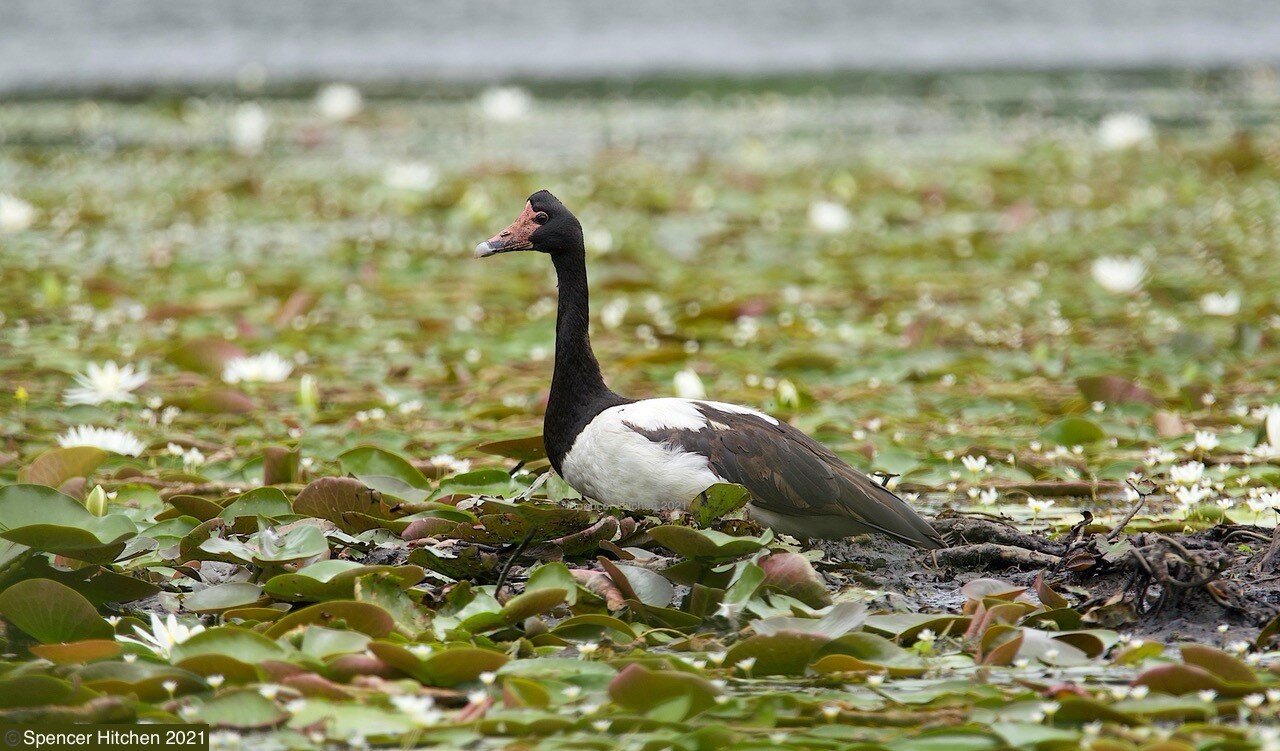
File snake (Nawandak)
The File snake is an aquatic snake that can grow up to 2.5 metres in length and survives on a monthly snack of fish found in the Kakadu waterways. Considered a delicacy highly prized for its rich fat and eggs, the File snake is cooked over hot coals and if they are carrying unlaid eggs they are cooked inside. Not an easy catch, the File snake is generally collected when the water levels are low as they congregate around the banks and tree trunks along the water's edge to escape the heat of the day. However hunters need to be super cautious not to become someone else's dinner due to the high population of saltwater crocodiles cruising around the river systems in Kakadu.
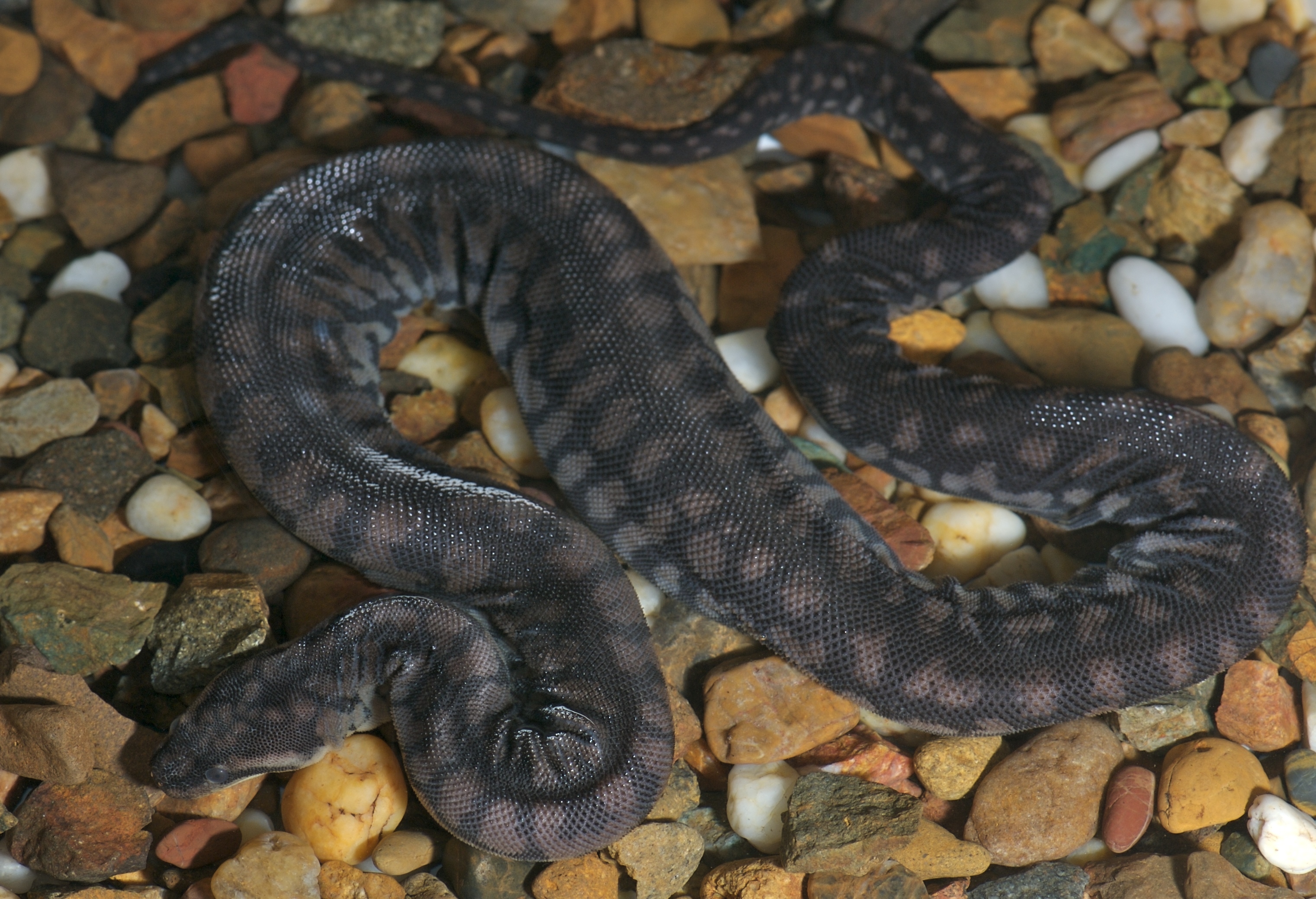
Using a crowbar or a long stick to poke around until they hit a file snake, then reach down into the water and pull it out. They have sharp long teeth so it’s important to grab the head to avoid being bitten. These water snakes are non-venomous, although increasingly dangerous this is still practiced throughout the region as people do not want to let tradition die and want to continue to enjoy their traditional foods. Traditionally, the file snake is killed by dislocating the neck which is the fastest and most humane method. People place the head in their mouths carefully to apply enough pressure to ensure the snake cannot open its mouth and then bite, pulling down hard between the joint.
Pig-nosed Turtle (Warradjan)
The Pig-nosed Turtle is found in Kakadu river systems feeding on aquatic plants, seeds and fruit that fall into the water growing on the riverbanks. They also enjoy small fish and insects. The traditional name for this turtle is Warradjan, and it is the largest of the freshwater turtles in the region where locals fish for Warradjan using hand lines with fish or red meat as bait.
The turtles are prepared using the leaves of the silver leaf paperbark tree to flavour the meat when cooked over coals giving a eucalypt taste to the meat as it cooks inside the turtle shell. Once the turtle has been eaten the remaining shell pieces are burnt in the fire as it’s the custom is said to ensure the next turtles to be fat.
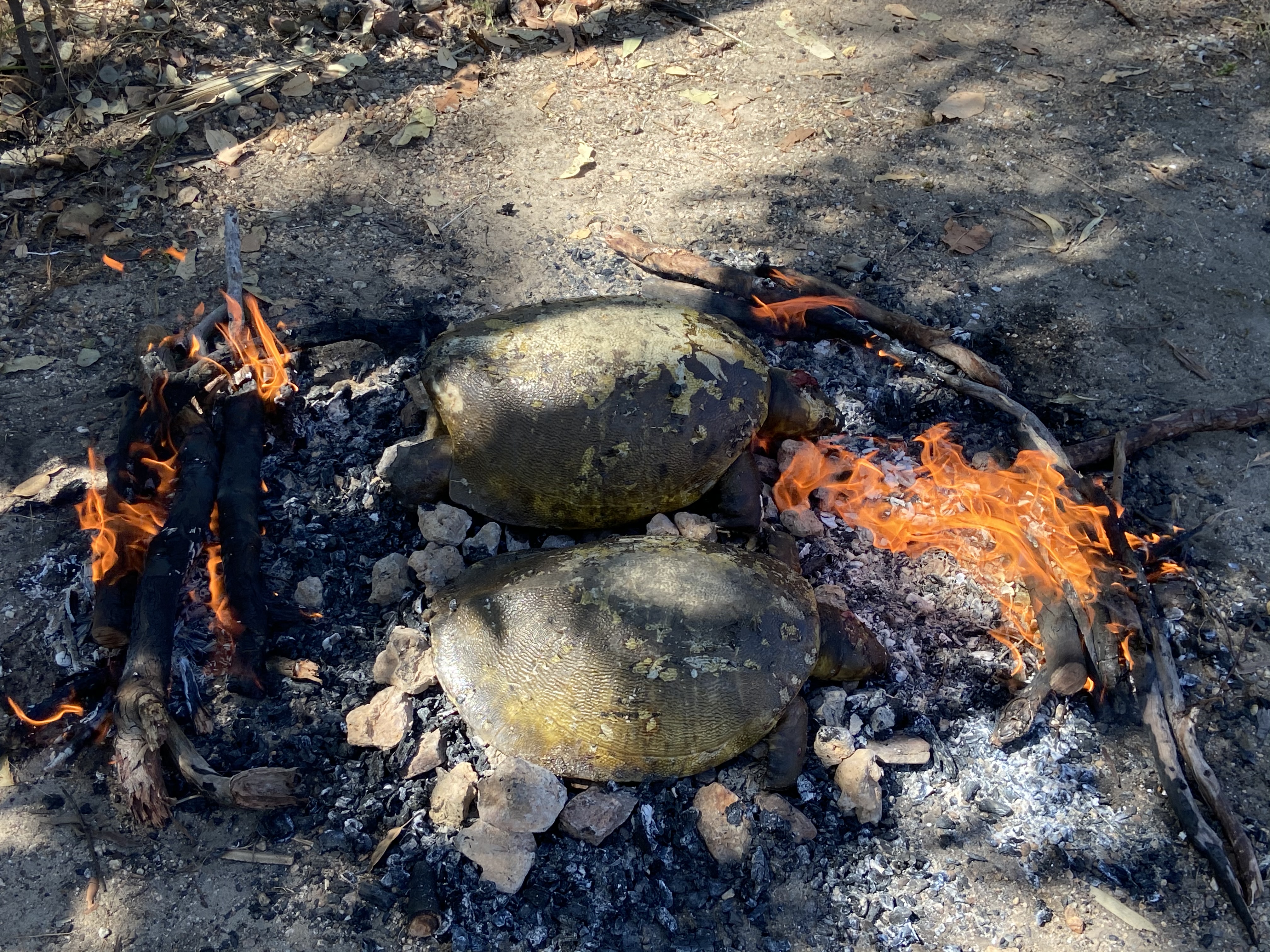
Water Buffalo (Anabarru)
In the early days when there was a higher population of water buffalo, they disturbed and dirtied the water, and the water took on a yellow tinge hence the name, Yellow Water Billabong. Today, the water is clear with fewer numbers of Water buffalo in the area, and despite the Buffalo’s feral animal status, they are accepted and embedded into the Aboriginal culture and have a name ‘annabarru’.
Buffalo consumes Hymenachne, a flood plain grass although native that chokes up the waterways of Kakadu. Controlled herds have shown to benefit the local environment as they manage grass density and in turn reduce the fire intensity later in the year. This has been the observation of people, the traditional owners, living on the land.

Before the National Park was established and the tuberculosis cull (aerial shooting) during the 1980s, the Aboriginal groups living in Kakadu observed the buffalo eating the grasses during the wet season resulting in less spear grass to be burnt in the dry season, creating ideal conditions for low intensity fire management. There was also a high population of native marsupials, rodents and ground nesting birds. Once buffalo were culled, they lacked the numbers needed to significantly reduce fuel loads resulting in intensified fires and the number of small native animals in Kakadu declining over time. Buffalo meat can be prepared how any other red meat can although the meat is generally tougher compared to other cattle and has a distinct gamey flavour. Local people like to make stews or cook in a ground oven.
FRUIT & VEG
Kakadu Plum (An-morlak)
The Kakadu plum is an intrinsic part of the Kakadu diet. As Australia’s star ‘superfood’ the Kakadu plum has the highest levels of Vitamin C of fruit in the world. The plum has been harvested for both food and medicinal purposes for thousands of years, with modern twists on preparation the Kakadu plum is making waves on the world stage. Eaten raw the plum is tart with the aroma of stewed apples and pears some saying it closely resembles the English Gooseberry in taste. The plum is present in foods like; jams, preserves, sauce, juice, and ice cream, with the plums inclusion only limited to the creativity of the chef. Be sure to try the fruit when visiting the region.
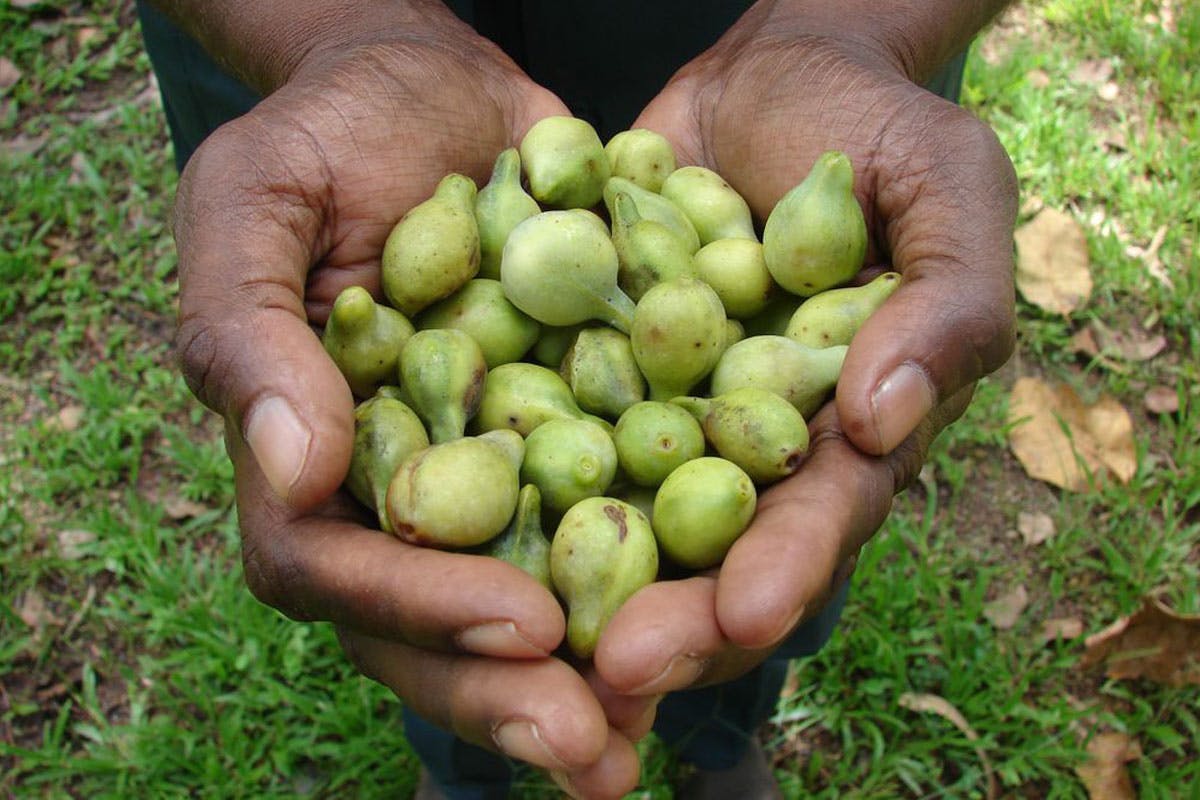
Red Bush Apple (An-djarduk)
The red bush apple can be eaten both raw or as an ingredient of a more complex dish. Raw the apple has a crunchy texture on the outside and is fluffy on the inside with a tangy flavour not unlike a rosella, a great option to any salad. Cooked the apple can be supplanted for its more prevalent cousins with apple crumble. Other ways to eat the apple include crushed into yogurt and honey adding a more complex flavour to the desserts.
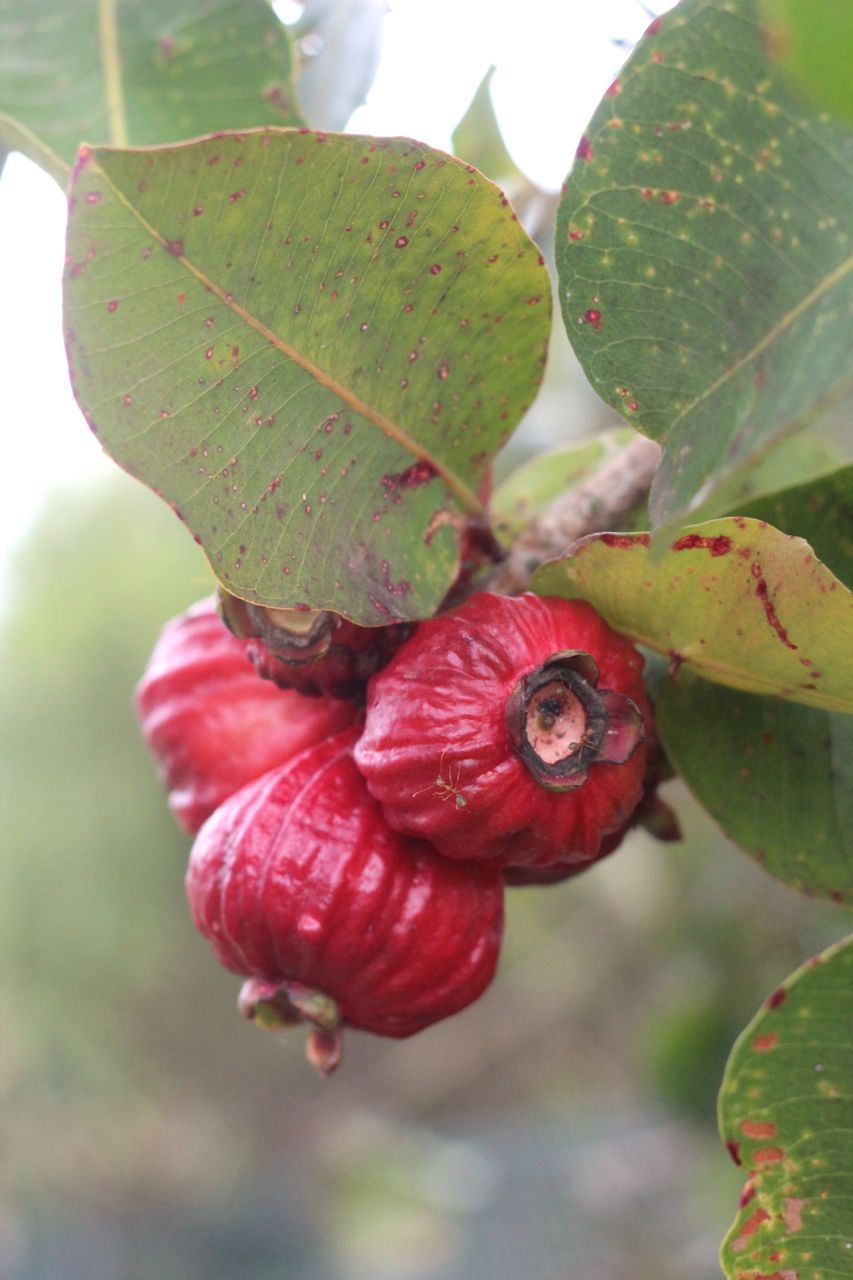
Water Lily (Andem/Lotus Flower)
The Kakadu Water Lily is a singular green leaf upon the water throughout the year shows off a large pink-yellow flower which smells divine. The base ingredient for bush bread the root tuber is ground down to create starchy seeds which is then used to make small bush cakes. Wrapped in the large green leaf the cakes are then baked underground, eaten with Kakadu plum or Red Bush apple spreads the bush bread creates the base of an all local meal.
